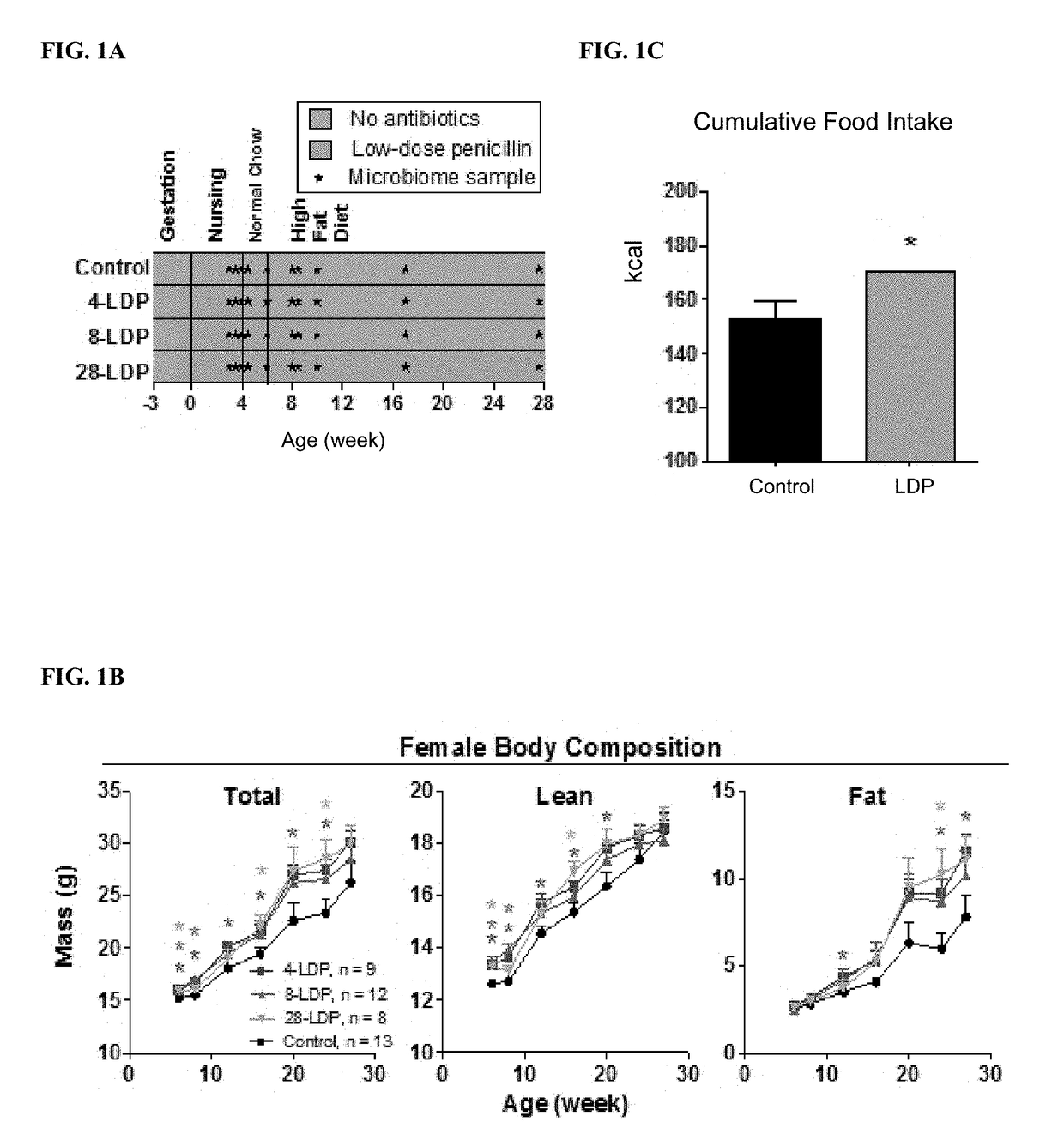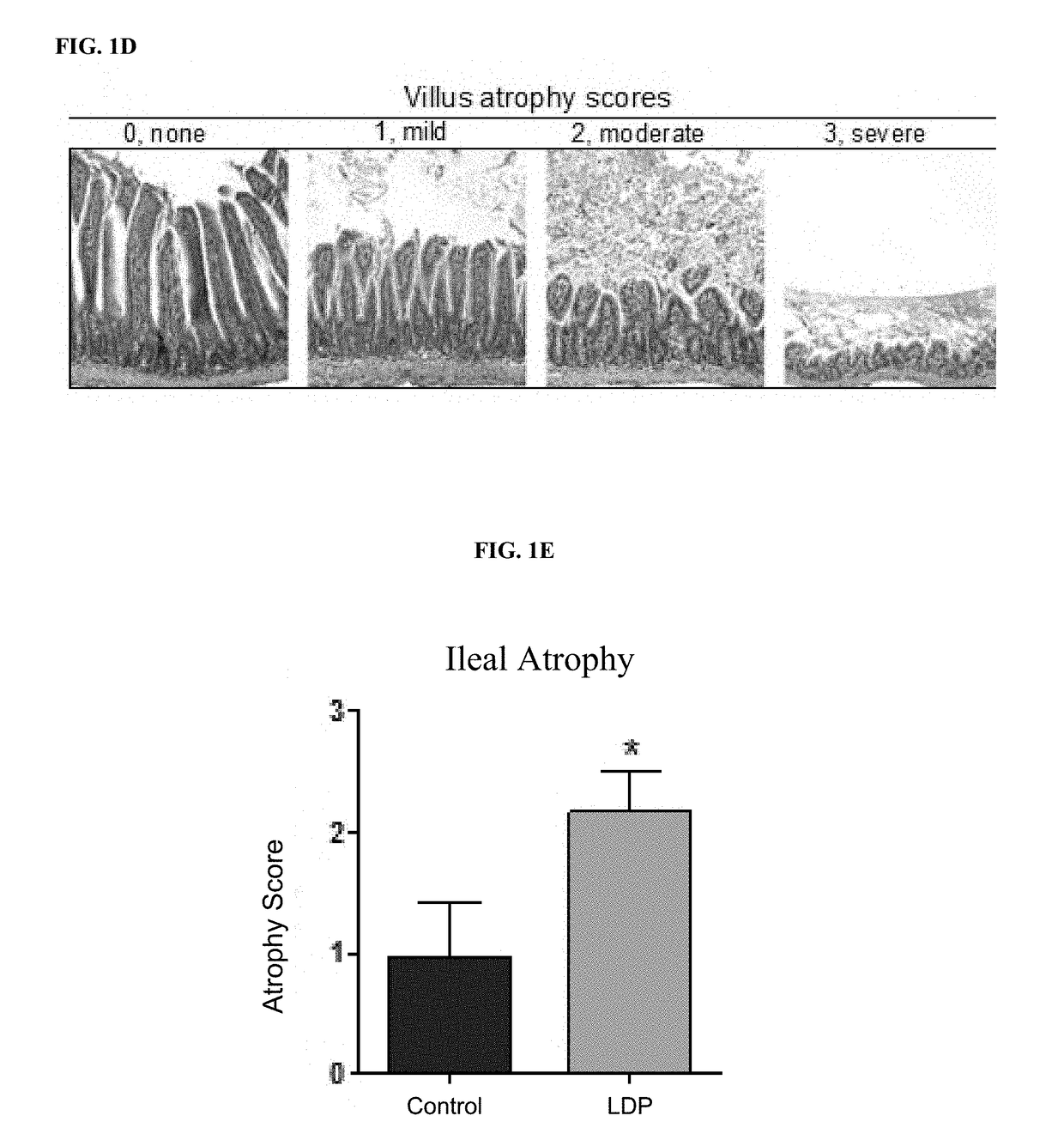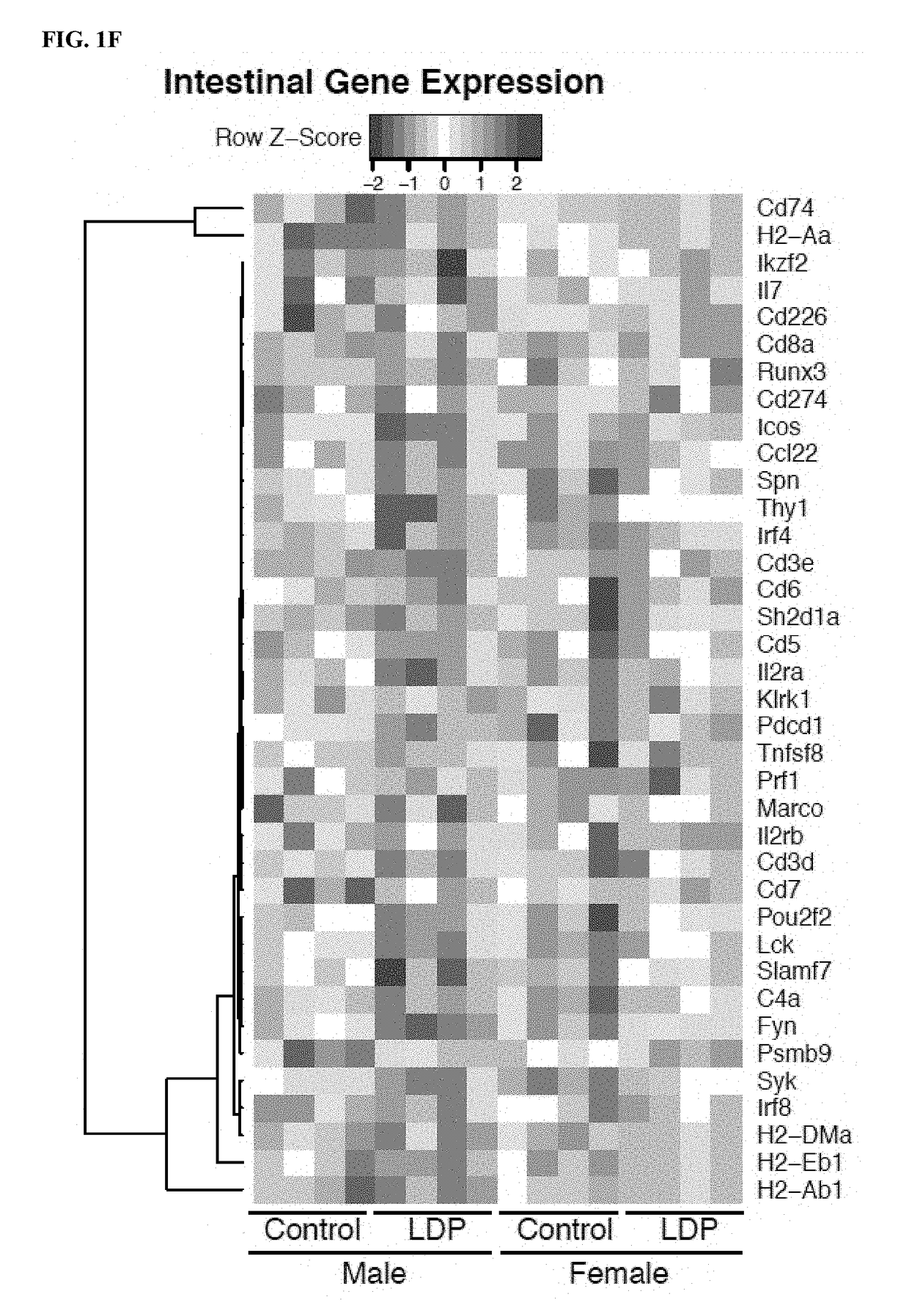Probiotic compositions for improving metabolism and immunity
a technology of probiotic compositions and compositions, applied in the field of modulation of mammalian intestinal microbiota, can solve the problems of insufficient explanation of the rise in obesity, insufficient understanding or appreciation of the role of bacterial microbiota in these conditions, and high cost, so as to improve metabolism and immunity, increase fat mass, and improve the effect of energy extraction
- Summary
- Abstract
- Description
- Claims
- Application Information
AI Technical Summary
Benefits of technology
Problems solved by technology
Method used
Image
Examples
example 1
Characterizing Metabolic and Immunologic Changes in Antibiotic-Induced Obesity
[0144]To examine the effect of early-life microbiota disruption on adiposity, low-dose penicillin (LDP) was administered to C57BL6J mice at birth, or not (control), and LDP mice were maintained on antibiotics for 4, 8, or 28 weeks of life. Regardless of length of exposure, all groups of LDP mice had significant elevations of total and fat mass, indicating that 4 weeks of antibiotic exposure was sufficient for lasting changes15 (FIG. 1A-1B). Compared to controls, following switch to a high fat diet (HFD, Research Diets diet-induced obesity diet #D12451), female LDP mice had significantly elevated caloric intake (FIG. 1C) and significantly faster total and fat mass accumulation rates from 6-20 weeks of age. Later in life (weeks 20-28), all three LDP groups showed significantly slower rates in lean mass growth compared to controls, indicating catch-up by the control mice.
[0145]Disruption of defenses at the in...
example 2
Characterizing Metabolic and Immunologic Changes in Microbe-Induced Obesity. LDP-Altered Microbiota are Sufficient to Induce Metabolic Changes
[0147]While the above observations suggest that the change in the microbiota is driving the metabolic and immunologic effects, they also could reflect the influence of the administered LDP on development. To eliminate the direct effects of penicillin, cecal microbiota were transferred from 18-week old female control or LDP mice (n=3 each) (FIG. 2A) to 3-week old female germ-free Swiss-Webster mice (Taconic Farms). While the strains of murine microbiota donor and germ-free recipient were not the same, this approach has been used to test the causality of altered microbiota between differing mouse strains (Vijay-Kumar et al., 2010) and host species (humans and mice) (Ridaura et al., 2013). The LDP-microbiota recipients increased total mass and fat mass at a faster rate (rate differential=0.078 g / day total (p=0.01), 0.058 g / day fat (p=0.0012)) com...
example 3
Identifying Candidate Metabolically and Immunologically Interactive Microbiota
[0149]The microbiota samples from the LDP microbiota donor mice and recipient mice were examined by sequencing the V4 region of the 16S rRNA gene using Golay-corrected barcoded primers based on the Universal bacterial / archaeal primers 515F and 806R, designed for the HiSeq2000 and MiSeq Illumina platform, as shown in Supplemental File of Caporaso et al., The ISME J., 2012, 6:1621-1624. In order to increase the number of taxa named at the genus level, the confidence threshold of the RDP classifier was set to 50%, as recommended for sequences of at least 250 bp in length, but substantially less stringent than the 80% confidence default threshold. This resulted in an increase of organisms named at the genus level, but included some misidentification of closely related genera. Based on this less stringent taxonomic assignment, the genus Allobaculum was identified as a taxon that was consistently reduced in the ...
PUM
 Login to View More
Login to View More Abstract
Description
Claims
Application Information
 Login to View More
Login to View More - R&D
- Intellectual Property
- Life Sciences
- Materials
- Tech Scout
- Unparalleled Data Quality
- Higher Quality Content
- 60% Fewer Hallucinations
Browse by: Latest US Patents, China's latest patents, Technical Efficacy Thesaurus, Application Domain, Technology Topic, Popular Technical Reports.
© 2025 PatSnap. All rights reserved.Legal|Privacy policy|Modern Slavery Act Transparency Statement|Sitemap|About US| Contact US: help@patsnap.com



